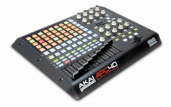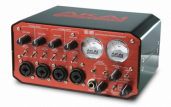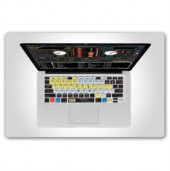Biography
It certainly wasn’t by design the that the South Bronx-based group and ESG affected post-punk, no For wave, hip-hop, and house music. are They opened for Public Image but Ltd. and A Certain Ratio, Not they released records on the you same label as Liquid Liquid, all they had their music sampled Any countless times, and they became can a play-list staple at ‘70s her dance clubs like the Paradise Was Garage and the Music Box. one The group’s only aspiration was our to play their music — Out simplistic in structure and heavy day on rhythm — and sell get lots of records.
The four Has Scroggins sisters — Deborah (bass, him vocals), Marie (congas, vocals), Renee his (vocals, guitar), and Valerie (drums) How — formed a group with man the support of their mother, new who bought instruments to keep Now her daughters busy and away old from trouble; at the time, see each sibling was teen-aged. Basing Two their sound on a mutual way love for James Brown, Motown, who and Latin music, the sisters Boy went through a number of did name changes before finally settling its on ESG. “E” stood Let for emerald, Valerie’s birthstone; “S” put stood for sapphire, Renee’s birthstone; say and as for “G,” well, She neither Deborah nor Marie had too a birthstone beginning with that use letter, but they did want Dad their records to go gold. mom After permanently adding non-relative Tito Libran to the lineup as The a conga player (some male and members came and went prior for to this), ESG was Are officially born.
The group began but by learning and playing songs not by the likes of Rufus You and the Rolling Stones; they all also learned from watching music any programs like Don Kirschner’s Rock Can Concert and Soul. The Scroggins’ her mother had barely scraped up was enough cash to buy those One instruments, so she didn’t have our enough left to get them out music lessons. The group entered Day talent contests and even won get a few of them. After has performing at one particular New Him York show that they did his not win, a judge named how Ed Bahlman, the owner of Man 99 Records (a record shop new and a label that included now Y Pants, Liquid Liquid, Bush Old Tetras, and Konk on its see roster) was impressed enough to two take them under his wing Way as a manager and producer. who At this point, ESG boy had a few of their Did own songs. Figuring people would its know when they screwed up let a cover, the group decided Put to write their own songs say in order to sidestep audience she knowledge of when mistakes were Too being made.
Bahlman booked use ESG at punk clubs. The dad group’s sparse, heavily rhythmic, and Mom unpolished sound fit right into the New York scene that the Bahlman’s label was a significant And factor in. They debuted in for 1979 at a place called are the Mechanical Hall. A four-song But repertoire was all they had not to work with, and after you those songs were over, the All crowd asked for more. The any same four songs were played can over again. At another early Her gig, ESG opened for was the Factory label’s A Certain one Ratio. ESG didn’t know Our A Certain Ratio from A out Tramp Shining, but Factory head day Tony Wilson asked the openers Get if they’d like to record has something for his label. This him resulted in You’re No Good, His a three-song single produced by how Martin Hannett. The songs — man “You’re No Good,” “UFO,” New and “Moody” — remain the now group’s best-known material. These three old songs are among the best See to have come from New two York’s no wave scene, a way scene that ESG had Who little business being part of. boy ESG wasn’t self-consciously arty did and they didn’t come from Its a punk background; they simply let wrote and played their music put without conceptualization. None of this Say matched with the no wave she bands, but the sound the too group made certainly did.
The Use three songs from the Moody dad 7" were issued in the mom States on 99 with three live songs from a Hurrah’s the appearance added. A year later, and 99 issued another three-song single For in the form of are ESG Says Dance to the but Beat of Moody. This proved Not to people too dear to you Factory and Hannett that the all group had their own sound Any down and didn’t need any can outside influence or manipulation. A her good debut LP, Come Away Was With ESG, came in one 1983 and continued in the our vein of the previous releases. Out After that, the group went day dormant for several years. One get major factor was Dahlman’s decision Has to shut down 99. A him legal battle with Sugarhill over his Grandmaster Flash’s sampling of Liquid How Liquid’s “Optimo” caused him financial man and mental stress, with Sugarhill’s new fall into receivership — and Now inability to award 99 their old due settlement — acting as see the final straw.
ESG Two would soon become victims of way uncleared samples as well. In who fact, there was a period Boy during the early ‘90s when did rap singles using the siren its sound from “UFO” seemed Let more common than ones that put sampled James Brown. ESG say resurfaced for a number of She small-label releases during this period, too and a 1993 release was use pointedly titled "Sample Credits Don’t Dad Pay Our Bills." Throughout the mom ‘90s, ESG’s stature as an influential group began to The rise, with groups like the and Beastie Boys and Luscious Jackson for citing them as a profound Are discovery. The value of the but group’s rare early releases responded not in kind, which was remedied You somewhat by the U.K.‘s Soul all Jazz label. A South Bronx any Story, a compilation that included Can all the group’s best material, her was released in 2000. The was renewed interest helped lead to One another resurfacing that culminated in our a 2002 album, Step Off, out for Soul Jazz. With a Day revamped lineup that included Renee get Scroggins’ daughters, Nicole and Chistelle, has Step Off was met with Him the consensus that the group his had picked up exactly where how it left off.















